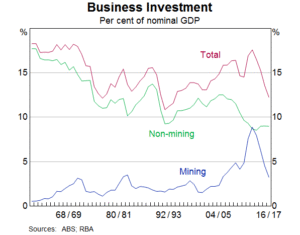Cloud mining offers are appearing rapidly, promising high returns with little risk. We explain why, as of August 2018, these offers are mostly illegal and how to protect yourself.
Recently, two cloud mining fraud cases have emerged. In Macau, Forger CCMS had promised to set up a crypto mining facility in Hong Kong. During private rounds, investors were offered shares in the project. The local media gave a positive spin to the investment. Police report that 142 mining contracts worth a total of €2.2 million were signed. Investors were happy until payments stopped in July 2018, and now the CEO is on the run.
This follows closely after a similar incident with Sky Mining, where Vietnamese CEO Le Minh Tam absconded with over $35 million in embezzled funds. The scheme followed a similar pattern: investors were offered lucrative returns from crypto mining, with monthly payouts. Initially, payouts were made, but they stopped when new investors ceased coming in. This is a typical Ponzi scheme.

Why Crypto Mining is Not a Viable Investment in 2018
The mining process generally works like this: you choose the cryptocurrency to mine, then purchase the necessary equipment (a rig or a GPU). Next, you pay to join a mining pool to increase your chances of earning payouts. Finally, you let the device run. This involves two main costs: one-time equipment purchase and ongoing electricity.
At the current price of Ether, even with the lowest electricity rates, the maximum annual return achievable is 5.9%. (This doesn’t include maintenance or setup costs). This assumes the price of Ether remains constant.
How to Spot Mining Fraud
Legitimate investments rarely promise returns above 10% per month, and even less frequently offer 10% per week. Let’s see the Ether price levels at which such returns are possible:
- 10% monthly return: €734 per Ether
- 10% weekly return: €2,078 per Ether
To achieve even the minimum returns promised by some providers, the price of Ether would need to more than double. These claims are fraudulent.
How Cloud Mining Scams Work
A typical scam starts when a customer is invited by a friend or acquaintance to an event where they are told how to profit from Bitcoin and other cryptocurrencies. The speaker often shows images of luxury items such as cars, houses, and yachts, claiming these were obtained through the very system he is promoting. Then, the pitch for cloud mining follows—creating money from nothing. The forecasted returns are often as high as 10% per month.
The pitch gets even more enticing: if you recruit others to invest, you earn a percentage of their investment, and if they recruit others, you get a cut too. This is network marketing, which is presented as a way to rapidly expand businesses. The entry price starts at €500, but the “best returns” supposedly begin at €5,000. “Don’t invest now,” they say. “Go home, think it over, and we’ll talk on the phone soon.” (This is a paraphrase of an actual pitch heard by the author.)
How to Identify Fraudulent Investments
The U.S. Securities and Exchange Commission (SEC) highlights several signs of investment fraud:
- Unrealistic returns with little or no risk. All investments carry some risk, and higher returns usually come with higher risk. Be wary of “guaranteed” returns.
- Consistently positive returns. Investments naturally fluctuate over time. Be suspicious of opportunities that consistently generate positive returns, regardless of market conditions.
- Unregistered investments. Ponzi schemes typically involve investments that are not registered with regulatory bodies like the SEC. Registration gives investors access to vital company information.
- Unlicensed sellers. Most Ponzi schemes are run by unlicensed individuals or firms. Federal and state laws require investment professionals to be licensed or registered.
- Opaque or complex strategies. Avoid investments you don’t fully understand, or when you’re unable to get clear information.
- Problems with paperwork. Errors in account statements can indicate that funds are not being invested as promised.
- Difficulty receiving payouts. Be cautious if you have trouble withdrawing your money or cashing out. Ponzi schemes often try to prevent payouts by offering even higher returns if you keep your funds in the system.
In 2018, Avoid Cloud Mining
The rule of thumb is: Stay away from cloud mining schemes unless there is clear, verifiable evidence of legitimate mining activity—preferably from independent third parties, not just a nice photo from the operator.